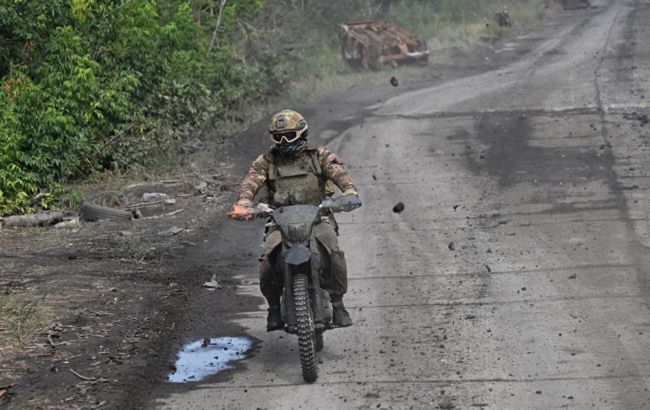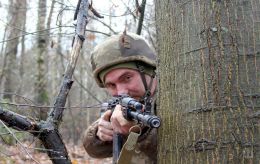Motorcycles vs. Ukraine's Armed Forces: ISW assesses Russia's new frontline tactic
 Illustrative photo: Russians plan to systematically use motorcycles on the frontline (Russian media)
Illustrative photo: Russians plan to systematically use motorcycles on the frontline (Russian media)
The Russian army command is training personnel to carry out assaults using motorcycles. However, the effectiveness of this equipment and tactic in offensive operations in Ukraine remains questionable, according to a report from the US-based Institute for the Study of War (ISW).
According to a new report from the Institute for the Study of War (ISW), Russian Defense Minister Andrey Belousov has instructed Ground Forces Commander Andrey Mordvichev to equip the Novosibirsk Higher Military Command School with motorcycles and all-terrain vehicles (ATVs) to align cadet training with current tactical needs.
Deputy Defense Minister Yunus-Bek Yevkurov stated that a training range in Krasnodar Krai is now equipped with a modern course for motorcycles, ATVs, and quad bikes. He added that Russia has modernized over 200 training centers in line with tactics currently being used in Ukraine.
New doctrine and centralized supply
Yevkurov also said the Russian military command has spent recent months formalizing motorcycle-based tactics and preparing them for widespread use across all branches of the Russian Armed Forces.
ISW cited a Russian channel that claimed Colonel General Mordvichev first employed motorcycles and ATVs for offensive operations in the Pokrovsk direction in late 2024. By June 2025, Russian forces in that area had developed formal guidelines for motorcycle use, which the command is now attempting to implement on other frontlines.
Currently, most motorcycles used in these operations are reportedly donated by volunteers or purchased by the soldiers themselves. However, Mordvichev is pushing to establish a centralized procurement system via the Defense Ministry and to create a dedicated technical reserve.
Procurement numbers and plans
According to military sources cited by the channel, Russia purchased over 40,000 Chinese-made motorcycles in 2024, with 20,000 already delivered to combat units. The Defense Ministry reportedly plans to acquire an additional 120,000 motorcycles, 30,000 ATVs, and 12,000 buggies by the end of 2025.
Another source claimed the ministry is considering the procurement of up to 200,000 motorcycles and 60,000 additional light vehicles in 2025. Mordvichev also reportedly plans to bring in instructors to train troops, some of whom may be former Wagner PMC fighters.
Doubts over combat effectiveness
Despite the expansion of this tactic, ISW noted ongoing skepticism in Russian sources regarding the Ministry of Defense’s ability to effectively standardize and enhance motorcycle assault tactics.
One Russian military blogger, a former instructor with the Storm Z assault units, criticized the vulnerability of motorcycles and ATVs to Ukrainian FPV drone strikes in a June 30 post. According to him, using motorcycles in assaults increases the ratio of killed to wounded personnel. He argued that such tactics can only be effective when paired with coordinated use of aviation, drones, and electronic warfare systems.
ISW experts acknowledged that motorcycles have improved mobility for some Russian units and helped them maneuver in contested gray zones along the front line.
"The milblogger noted that motorcycle assaults could be more successful should Russian forces use motorcycles in tandem with significant air, drone, and electronic warfare (EW) support," the report concluded.
Motorcycle assaults on the rise
Russia’s use of motorcycles in assaults against Ukrainian forces was first reported in March, when 40 motorcycles were deployed in an attack along one frontline sector.
The Ukrainian Armed Forces later identified two reasons for Russia’s reliance on motorcycle columns: increased speed in short-range advances and reduced visibility compared to armored vehicles.
Russian troops have since begun using motorcycle-based assault groups more frequently, particularly in the Donetsk region.

